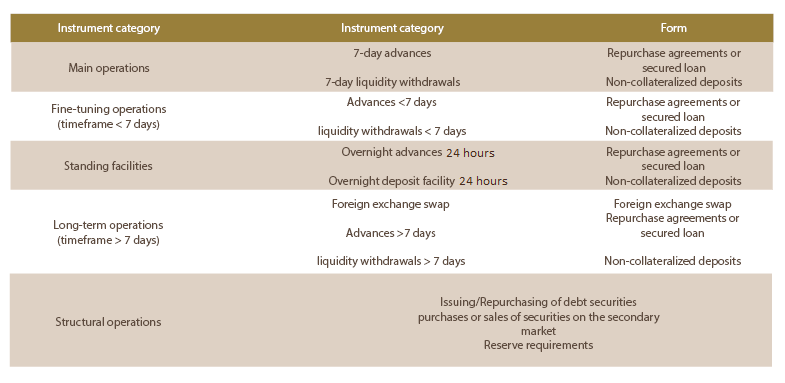Introduction on market operations
The operational mechanism of monetary policy includes the following instruments:
- Main operations: Main operations aim to bring the interbank rate in line with the target policy rate. These operations represent the main channel through which liquidity is injected or withdrawn. They are regularly carried out, through weekly auctions. In case of excess liquidity, the Bank’s primary instrument is liquidity withdrawal operations, while in the event of liquidity shortage it uses 7-day advances.
- Fine-tuning operations: these are one-off operations of the central bank, which aim at easing the impact of unforeseen changes in banks’ liquidity. They cover a period of time less than 7 days and take essentially the form of repurchase agreements or, if the need arises, secured loans.
- Standing facilities on banks’ initiative: Standing facilities on banks’ initiative, whose goal is to keep the interbank rate within a predefined range and limit the scope of its variations near the policy rate. They are used by monetary policy counterparts to adjust their liquidity. These are the overnight advances and the overnight deposit facilities.
- Long-term operations: they aim at withdrawing or injecting additional liquidity over a period of more than 7 days. They take the form of repurchase agreements, secured loans or foreign exchange swaps.
- Structural operations: They aim at dealing with a persisting situation of liquidity surpluses or shortages. They consist in purchases or sales of securities issued by the Treasury on the secondary market and in the issuing and repurchase by Bank Al-Maghrib of negotiable debt instruments.
| MONETARY POLICY INSTRUMENTS |
|---|
 |
Search





























